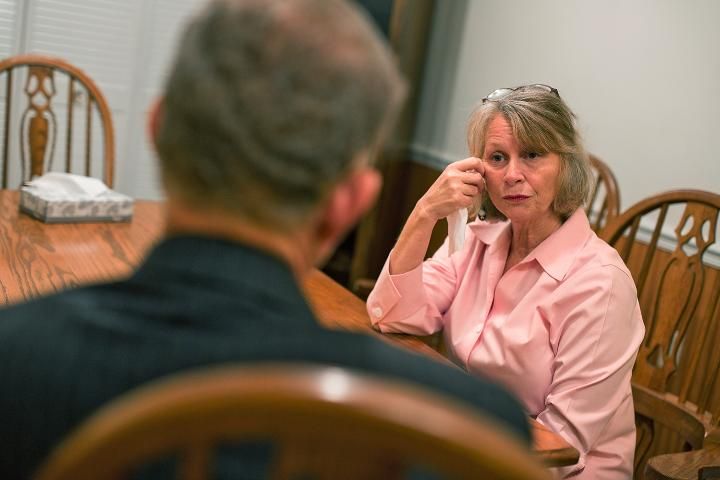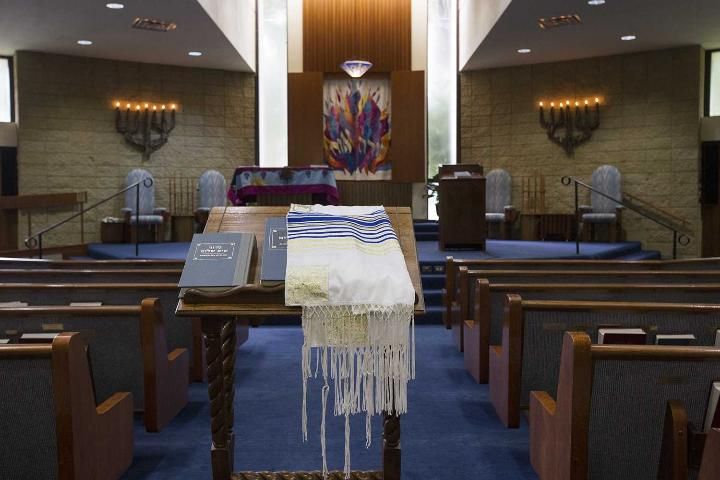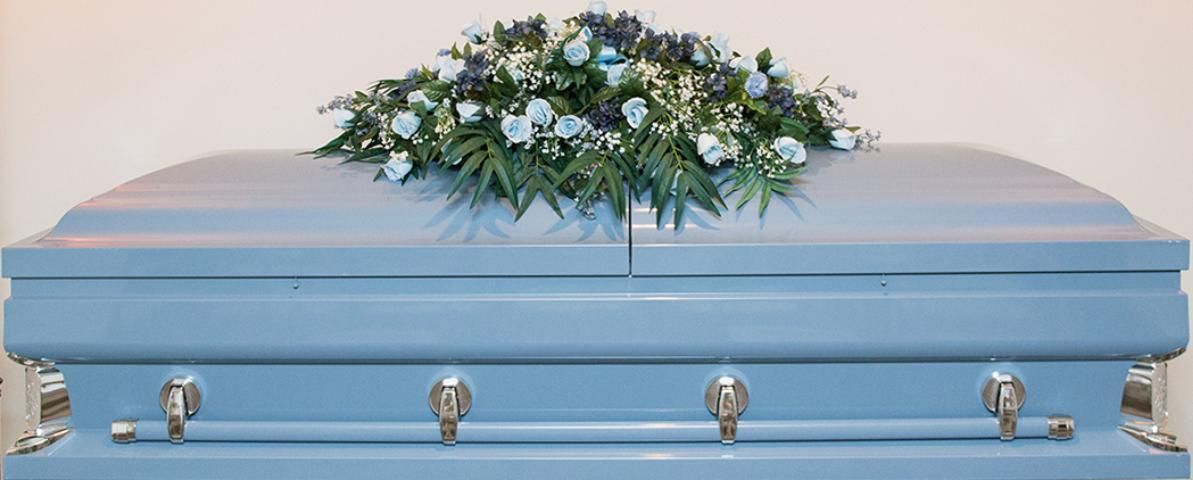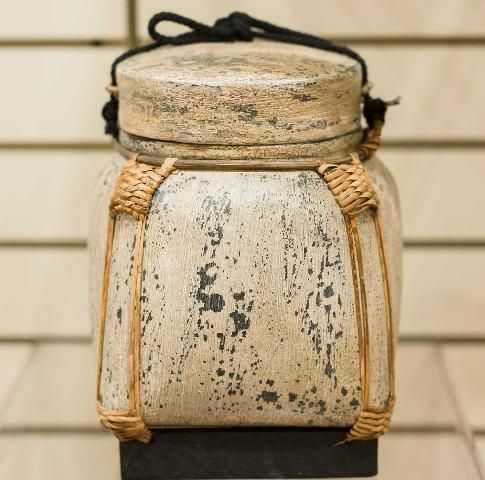Introduction
This document is part of a series which addresses end-of-life concerns, entitled The Art of Goodbye.
The consumer is faced with complex personal decisions while making final arrangements. Final arrangements might include a religious ritual, service, tribute, funeral, and/or burial. They may include the handling of remains and can also refer to:
- Cremation
- Viewings
- Other end-of-life rituals or traditions
This publication will help you develop a final arrangements plan using a coordinated approach.
Getting to the Right Answers
Finding answers that suit your preferences does not occur overnight. The process can and should connect life to death, which takes time. Preparing in advance should help to reduce the social discomfort associated with death and dying. In this way, shame and guilt can be replaced with relief and satisfaction that we owned our final goodbye. After all, the way we depart remains in the minds of those who survive us.

Credit: UF/IFAS
Think Before Planning
There is no need at the moment to discuss making final arrangements, rather, thinking about final arrangements first will lead to planning ahead. Without planning, loved ones are left to guess. Others feel guilty and experience stress, burdensome anxiety, rushed decision-making, and unnecessary conflict. Whether they are willing to admit it or not, loved ones are commonly relieved when everything is written down on paper. Making your final arrangements:
- Reduces fears and stress
- Likely reduces expenses by allowing for cost comparisons
- Offsets emotional decision-making
Taking ownership of our final arrangements gives us the opportunity to make meaningful and informed decisions by affording us time to look into more emotionally gratifying alternatives. Left to second-guess what would have been meaningful to the deceased, survivors typically overspend out of guilt, pressure, and/or the fear of not doing enough. On the other hand, with proper planning, survivors are able to honor the dead and celebrate a life.
Final arrangements are the ritual of separation that allows the living to process grief and begin to heal, bringing a sense of closure for relatives and friends.
Funeral Rule
Funerals are a consumer product. The Federal Trade Commission enforces the Funeral Rule, which was written for consumers' protection. To view the Rule in its entirety, visit https://consumer.ftc.gov/articles/ftc-funeral-rule. The Rule makes it possible for you to choose those goods and services you want or need and to pay only for those you select, whether you are making arrangements when a death occurs or in advance. The Rule allows you to compare prices among funeral homes and also makes it possible for you to select the funeral arrangements you want at the home you use. The Funeral Rule does not apply to:
- Third-party sellers
- Cemeteries that lack an on-site funeral home
The Rule does give you the right to:
- Buy only desired goods and services
- Get price information by telephone
- Receive the General Price List (GPL), an itemized price list, at the funeral home
- See a written price list for caskets before seeing actual caskets
The Rule allows funeral providers to charge a basic fee that cannot be waived. Included in that fee is money for:
- Funeral planning
- Securing permits
- Making copies of death certificates
- Preparing and distributing notices
- Sheltering remains (Federal Trade Commission, n.d.)
Determinants

Credit: UF/IFAS
Each element of our final arrangements serves a unique purpose. Rituals and symbols help express thoughts and feelings. How we arrive at a meaningful send-off is influenced by our personal and societal:
- Values and behaviors
- Circumstances
- Religion and culture
- Economic status
- Preferences
Funeral Providers and Funeral Directors
You are not required to use a funeral home to plan and conduct a funeral in most states. However, some people find the services of a professional funeral home comforting because funeral professionals have more experience with details as well as knowledge of legal requirements. Funeral directors are typically associated with funeral homes. They are caregivers and administrators who make arrangements for transportation of the body, complete necessary paperwork, and implement stipulations regarding the funeral and final disposition of the body.
You may make arrangements through a funeral planning or memorial society (nonprofit organization). Keep in mind that the inclusion of the word "society" in a name does not guarantee an organization's nonprofit status. If you are in doubt about the status of an organization, verify through the IRS (https://www.irs.gov/charities-non-profits/tax-exempt-organization-search). The Funeral Consumers Alliance is a nonprofit organization founded in 1963 to protect the consumer's right to choose a meaningful and affordable funeral. To learn more, visit https://funerals.org.
Funeral Provider Selection
It is important to research funeral and final arrangements options in much the same way we would research other goods and services prior to purchase. Here is a list of essentials to consider when selecting a funeral provider:
- Convenience
- Previous experience
- Reputation
- Funeral director and other staff
- Cost
- Size of funeral home
- Appearance and environment
- Exterior
Types of Final Arrangements
- Full-service or traditional funeral
- Immediate or direct burial
- Direct cremation or cremation
- Green
Full-Service or Traditional

Credit: UF/IFAS
Full-service or traditional funerals are generally the most expensive. Costs vary widely between metropolitan and rural areas. Extras play heavily into pricing. Conducting a service at a place of worship is one way to reduce expenses.
Charges for funerals are broken down into three categories:
- Services and Funeral Home Charges
- Embalming
- Although not required by Florida law, the law stipulates the body must be embalmed or refrigerated within 24 hours of death.
- Visitation
- The casket is closed or the body is not present at all.
- Takes place at the funeral home, your own home, or the social hall at a place of worship
- May take place before or after the funeral and disposition
- Viewing
- Takes place at the funeral home, your own home, or the social hall at a place of worship before the funeral and disposition
- The body is on display in a casket which may be open or closed.
- May be family-only or open to the public
- Transportation
- May include a funeral coach to carry the body, a clergy car, a family limousine, a pallbearer's limousine, and a flower car
2. Merchandise
- Acknowledgement cards (thank you notes) for significant gestures, including flowers, food, or participation in the funeral service itself
- Casket, vault, or urn
3. Third-Party Fees
- Flowers, music
- Cemetery or crematory, monument
- Newspaper notices
- Clergy
Immediate or Direct Burial
Immediate or direct burial costs significantly less than a traditional funeral because fewer goods and services are utilized. The body is buried in a simple container shortly after death. There is no viewing or visitation. A vault or grave liner, a cemetery plot, and a marker are the other costs associated with a direct burial. Expenses typically include:
- The funeral home's basic services fee
- Transportation and care of the body
- Purchase of a casket or burial container, which can cost several hundred to thousand dollars
- Cemetery plot or crypt
Note: There is an extra fee if the family elects to be at the cemetery for a graveside service.
Direct Cremation or Cremation
Direct cremation takes place soon after death and is usually less expensive than direct burial. Embalming and a casket are not required, and no viewing or visitation takes place. According to the Funeral Rule for Direct Cremation, funeral directors cannot say any law requires a casket, because none do. They are required to disclose in writing your right to purchase an unfinished wood box or alternative container and then make one available. After cremation, the remains are released to the family. They may be placed in an urn or other container and buried, kept, or scattered. If buried, the ashes can be placed in a crypt or niche in a cemetery. Ashes cannot be scattered over public lands and waterways in Florida without a permit.
Burials at sea are regulated by the Environmental Protection Agency (EPA), not by the Coast Guard. People may perform burials at sea as long as they meet the requirements of section 229.1 of Title 40, Code of Federal Regulations (40 CFR 229.1). For more information, visit https://www.epa.gov/ocean-dumping/burial-sea.

Credit: UF/IFAS
Green Burial
If sustainability has been an integral part of a person's life, the environmental impact of their remains as well as conservation may be concerns to keep in mind for their final arrangements. As traditional funerals made way for cremation, green funerals have become a newer alternative for final planning. According to the Green Burial Council, the prevailing mindset behind this movement is that there is minimal environmental impact through reduced carbon emissions, increased protection of worker health, and restoration and/or preservation of habitat. Interment takes place in a manner that does not inhibit decomposition, but allows the body to recycle naturally instead. Embalming is not a consideration because it destroys the microbial decomposers that break down the body. Suitable caskets, urns, or shrouds are made from nontoxic and readily biodegradable materials. Natural burials can take place both on private land (subject to regulations) and in any cemetery that will accommodate the vault-free technique. A green funeral could be a gathering in a natural setting, using locally grown flowers, local or organic food, and sustainable biodegradable clothing, shroud, and/or casket.
Note: Terms like natural, sustainable, and green could be meaningless if not understood and verified by the consumer. Be sure to ask questions and have a thorough understanding of the process before you make a choice.

Credit: UF/IFAS
Final Disposition
Final disposition is the burial or cremation of the deceased. Whether remains are cremated or handled in a traditional manner, charges incurred for final disposition may include fees for opening the grave for interment and filling it back in. If the deceased is to be buried, pay careful attention when purchasing a cemetery plot. The following should be considered:
- Cost
- Location of cemetery
- Religious requirements
- Restrictions
- Burial vaults
- Monuments
- The Funeral Rule stipulates a cemetery may not charge a fee to a licensed monument dealer to place a marker in a cemetery.
- Flowers
- Ascertain whether there is perpetual care or a separate endowment fund for upkeep.
Mausoleum entombment involves placing the casketed remains in a space or crypt within a specialized above-ground building. The area remains clean and dry, and the entombed do not come in contact with earth. It can be a private family building that stands alone within the cemetery or a public mausoleum. Mausoleums also have areas where urns can be placed.
A columbarium contains small spaces or niches designed to hold one or two urns. Lawn crypts are a compromise between ground burials and mausoleums. They are frequently double-depth to accommodate two people whose preference was to be laid to rest together.
Cremation typically involves paying a basic services fee to the funeral home for transportation and care of the body. A crematory fee may be included or added to that basic services fee. The cost of a cemetery plot or crypt is added only if the remains are buried or entombed. If that is the case, expect mausoleum or columbarium opening and closing fees and possible endowment care.
Burial Vaults and Grave Liners
Burial vaults or grave liners are sometimes known as outer burial containers. They are used to prevent the ground from caving in due to the deterioration of caskets over time. Although they are not required by state law, they may be required by the cemetery. A grave liner is made of reinforced concrete and covers only the top and sides of the casket. A burial vault is more substantial and costly. It surrounds the casket in concrete or other material and may be sold with a warranty of protective strength. Outer burial containers may be less expensive to purchase from a third-party dealer. However, certain cemeteries place restrictions if these are purchased elsewhere. Always ask!
Burial on Family Property
State laws concerning burial on private property vary. Florida law permits establishment of family cemeteries of less than two acres, but local zoning laws and deed restrictions play heavily into a final determination. For more information, visit https://www.myfloridacfo.com/Division/FuneralCemetery/Consumers/ConsumerFAQ.htm.
Other Considerations
Tissue or Organ Donation
According to the Department of Health and Human Services, most major religions in the United States support organ donation and consider donation as the final act of love and generosity toward others. Through the entire donation process, the body is treated with care, respect, and dignity. There is no cost to donors or their families for organ or tissue donation. Every state provides access to a donor registry where its residents can indicate their donation decisions. To learn more, visit https://www.organdonor.gov.
Body Donation
Donating one's body is a valuable gift to science and medicine. This generous gift supplies anatomical materials for teaching and research programs. Donated bodies support the training of physicians, dentists, physician assistants, and other health workers. At the time of donation, families may request to have the cremated remains returned some time later. To learn more, contact the Anatomical Board at the institution of your choice. To learn more about the program at the University of Florida, visit https://anatbd.acb.med.ufl.edu.
Important Note: You should inform your family of your wishes and intent to donate your body after death and identify a person (next of kin or legal representative) who will inform the program immediately after your death.
Additional Personalization
Eulogies, displays, and tributes help personalize the memorialization of a life. The following is a sampling of symbols used to further personalize the ceremony:
- Flowers or requests for donations to a favorite charity or mission
- Music or other fine arts
- Picture boards or multimedia presentations
- Obituaries and eulogies
- Personalized casket or urn
- Display of awards and/or medals
Funeral Celebrants have come about as a result of death care adapting to current societal needs. These non-clergy individuals are trained to meet the needs of the family during their time of loss. They create personalized funeral services that reflect the personality and lifestyle of the deceased.
Veterans
All veterans are entitled to a free burial and grave marker in a National Cemetery. This honor extends to certain civilians and public servant health personnel who have provided military-related services. Each state has a National Cemetery. In Florida, the cemetery is located in Bushnell (352-793-7740). The Department of Veteran Affairs can answer questions and address concerns. Please visit https://www.cem.va.gov or call 1-800-827-1000.
Military Burial at Sea Program
Burial at Sea is performed on United States Navy vessels. The committal service is performed while the ship is deployed. Therefore, family members are not allowed to be present. The commanding officer of the ship assigned to perform the ceremony will notify the family of the date, time, and longitude and latitude once the committal service has been completed. To learn more about the Burial at Sea program, contact the United States Navy Mortuary Affairs at 1-866-787-0081 and visit https://www.mynavyhr.navy.mil/Support-Services/Casualty/Mortuary-Services/Burial-at-Sea/.
Preplanning and Prepaying
Funeral planning is considered an element of estate planning. As such, you make decisions and put them in writing in advance. Good documents that are developed by an attorney are an important investment.
Paying for funeral arrangements in advance is intended to save money because it allows for goods and services to be purchased at today's prices. Certain state laws require the funeral home or cemetery to place a percentage of the prepayment in a state-regulated trust, but protections vary widely from state to state. Certain state laws offer little to no effective protection. It is always best to consult with an attorney before making a purchase of this nature.
Most importantly, review your plans annually because circumstances can and do change.
Scam Prevention
Scammers read the obituaries. They may call survivors and claim that the deceased has outstanding debt. To keep anything like this from happening to your loved ones in the future, include funds to pay off debt in your will. To assist in fraud prevention:
- Draw up plans with reputable funeral businesses
- Save copies of your paperwork for survivors
- Keep your instructions handy, allowing for immediate access. Remember to tell your loved ones where you have put them. You may want to provide a copy to the executor of your estate. A safety deposit box is not always accessible in the event of a sudden and unplanned death.
To learn more about your rights or to file a complaint in the state of Florida, visit https://www.myfloridacfo.com/Division/FuneralCemetery/Consumers/ConsumerFAQ.htm.
Conclusion
Final arrangements will vary depending on plans completed by the deceased or the preferences of survivors. The degree to which final arrangements are carried out will depend on the value placed on rituals and tradition. There is no right or wrong path. Something as personal as a final goodbye should take preferences, beliefs, and budget into consideration.
Acknowledgements
Appreciation is given to the staff of Prairie Creek Conservation Cemetery for their assistance and permission to use the grounds.
References
40 CFR §229.1. Accessed on July 14, 2016.
Federal Trade Commission. (n.d.). The FTC Funeral Rule. Accessed on June 21, 2022. https://consumer.ftc.gov/articles/ftc-funeral-rule
Federal Trade Commission. (n.d.). Funerals: A consumer guide. Accessed on June 21, 2022. https://irp-cdn.multiscreensite.com/e1f059c4/files/uploaded/Funerals_A_Consumer_Guide.pdf
Federal Trade Commission. (2013). Shopping for funeral services. Accessed on June 21, 2022. https://consumer.ftc.gov/articles/shopping-funeral-services
Florida Division of Funeral, Cemetery & Consumer Services. (n.d.). Consumer tips. Accessed on June 12, 2013. https://www.myfloridacfo.com/Division/FuneralCemetery/Consumers/ConsumerFAQ.htm
Green Burial Council. (n.d.). What is the Green Burial Council? Accessed on July 15, 2016. https://www.greenburialcouncil.org
Harrison, M. N. (2000). Pyramids to Urns: Funeral Costs and Options. FY023. Gainesville: University of Florida Institute of Food and Agricultural Sciences. https://edis.ifas.ufl.edu/publication/fy023
United States Navy. (2016). United States Navy Mortuary Affairs Burial at Sea program. Accessed on February 16, 2022. https://www.mynavyhr.navy.mil/Support-Services/Casualty/Mortuary-Services/Burial-at-Sea/